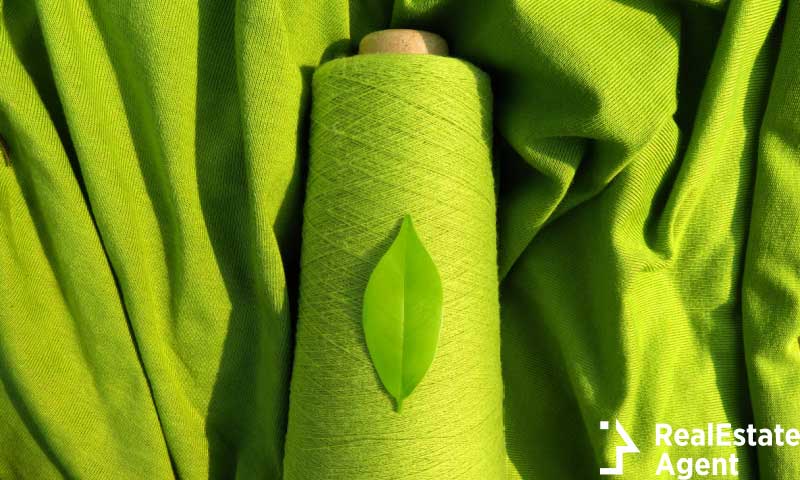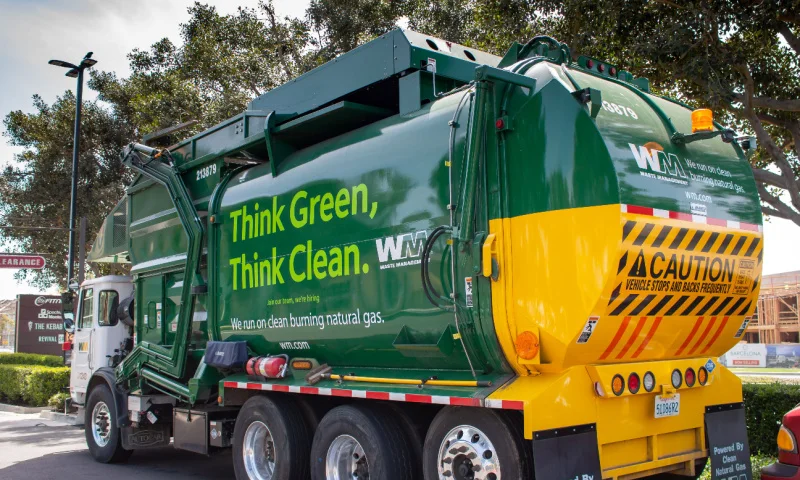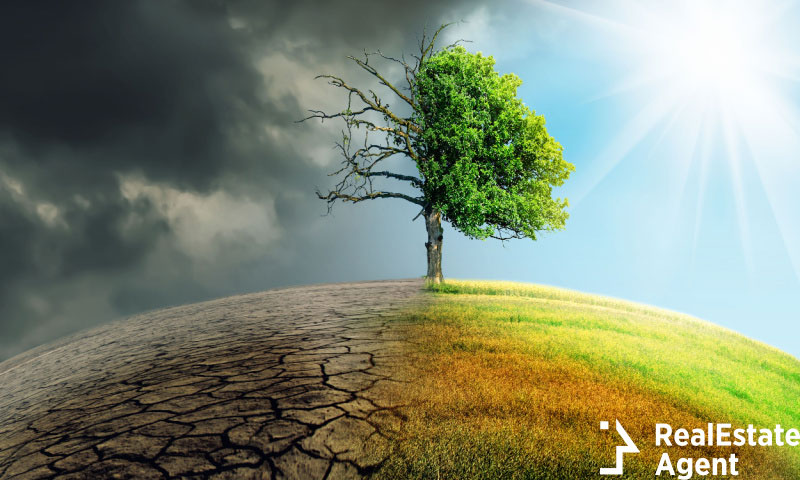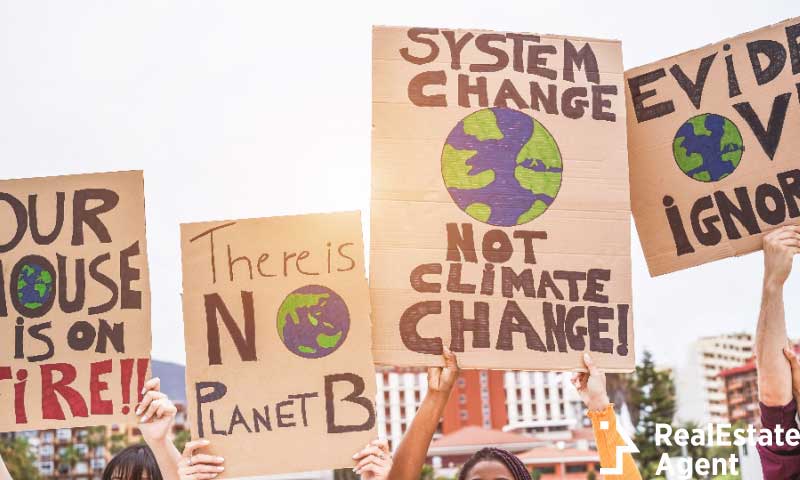We have long been aware of the phenomenon, that small actions we take, that don’t seem like a big deal for us at the moment have a ripple effect, and the consequences have a tendency to return in a scaled-up form some unexpected time in the future. Bio fabrics are here to change that.
Some call it karma, while others just stick to cause-condition, in any case, the problem seems to be the same. Irresponsible actions harm the environment, and the damage is already done by the time we realize it. Many argue that the modern lifestyle is bad for the environment. And with solid reasons: the fashion industry has a significant impact, being one of the most polluting industries in the world. From the production of synthetic fibers and chemical processes to dyes that leave behind contamination and dangerous wastewater, the production of textiles has many dark sides. The amount of water, energy, and fossil fuels used and the mountains of harmful waste ending up in landfills are staggering.
But rather than curling up in a hole and agonizing over the damage, it’s more productive to take a curious approach and learn about the textiles of the future, which could bring a significant positive turn to this industry. Technology is making us smarter in some aspects, allowing research to be conducted in areas no one thought could be possible. Bio fabrics are a new area of research and development, with promising results for producing environmentally friendly biodegradable materials, reducing waste, and promoting sustainability.
What are biofabrics?
Bio fabrics are an emerging research area that uses living cells and organisms to create biological materials. Those are functional fabrics that have unique properties and are biodegradable. The textile industry is one of the main fields that can cherish the development of bio fabrics. From clothing to medical devices and uses in regenerative medicine, these materials have lots of potential.
There are several methods to produce bio fabrics. Weaving and knitting them is possible, but 3D printing or growing them in labs is also an option. It’s easy to see why bio fabrics are the textiles of the future. First of all, they are biocompatible and biodegradable. They constitute an organic and sustainable alternative to harmful synthetics. Bio fabrics seem to be the most promising in the textile and medical industries. These materials offer possibilities and open up new frontiers in sustainable textile engineering.
The importance of development in textile technologies
The textile industry is one of the most polluting industries in the world. Clothing production uses significant amounts of water and generates waste containing chemicals, dyes, and pollutants. This used and contaminated water is often released into nearby rivers and lakes, leading to severe and irreversible damage to the local ecosystems. Air pollution is also a significant problem in the textile industry, with the fossil fuels used for energy and transportation on one side and the burning of textile waste on the other. The effects of the lack of environmental planning in the textile industry are shocking.
The production of textiles also requires huge portions of land to grow cotton and other fibers, and the inadequate use of the soil leads to depletion and degradation. Forests are cut to make space for more land – the elimination of the root networks often leads to erosion and landslides changing the whole landscape and impacting the lives of the local communities. Chemical waste production, energy usage, and greenhouse gas emissions are all dark spots of today’s textile industry – all of which are major contributors to climate change.
Hopefully, biofabrics and the textiles of the future will succeed in bringing a change to the industry.
Matter doesn’t disappear…
Let’s not forget about the impact of the textile industry on the environment that doesn’t happen right before our eyes. It’s a known fact that textile waste from developed countries ends up in countries such as Ghana, Nigeria, and Kenya. Those frequently arrive in the form of donations, but the truth is, it’s just waste disguised as fashion trends, or charity. Those countries are flooded with low-quality clothing that can’t be harnessed by locals. These end up in landfills, creating a landscape with mountains of developed-country waste that is practically exported to decompose on a different continent.
Slow and inadequate decomposition releases methane into the environment. It’s sad to see that mountains of cloth are burned as an alternative, polluting the air.
The textiles of the future are designed to be biodegradable. Those are made of organic materials that don’t take as much time to decompose.
The long-term effects of development
With the significance of the impact on the environment stated above, it’s easy to see why development in the field of bio fabrics is crucial. By promoting circular economy, bio fabrics are on the straight path to building a more sustainable future.
Bio fabrics could significantly reduce the environmental damage caused by the textile industry. The resource depletion problem would also take a positive turn. And building a green future together would be easier. Bio fabrics are renewable materials: their development aims to create sustainable solutions. Chemical health hazards could be reduced, as well. But the development of bio fabrics stretches even further. It could put an end to the ethical problem of social injustice in the textile industry by reducing the exploitation of cheap workforce in developing countries.
Textiles of the future – what are they made of?
So, what are the textiles of the future made of? Let’s take a look at the several types of biodegradable textiles that are currently being researched. Here are some of the most promising ones.
Algae and seaweed textiles
Algae textiles are a new field of research of great potential with sustainability, biodegradability, and versatility. Algae fibers have many advantages because they can be grown using minimal resources, no pesticides, and no fertilizers. They make excellent candidates for the textiles of the future.
Algae are amazing organisms that produce 50% of the breathable air in the atmosphere. That’s one of the many reasons why the future of the phytoplankton is important to us. But biodegradable fabrics made from algae also have enormous potential in reducing textile production’s harmful environmental impact. Bio fabrics made from algae can be engineered to have specific properties. They can be made to have anti-bacterial or UV-resistant properties. The pigments extracted from algae can be used as natural dyes, replacing the ones that are chemical based.
Mycelium-based fabrics
Bio fabrics can be made out of mycelium: the vegetative part of fungi can be used to create diverse materials and textiles. Those mycelium-based bio fabrics are durable, lightweight, and, of course, biodegradable.
Mushroom leather
Also made from mycelium, the mushroom leather can be engineered to look and feel like genuine leather. It can be used to create various products, from handbags to footwear.
Pineapple leaf fiber
Pineapple leaf fibers are extracted from the waste of the pineapple harvest and can be processed into a biofabric similar to leather. The innovative company called Ananas Anam has developed Piñatex, which is a biofabric with properties similar to leather.
Milk fiber or milk wool
Milk protein fibers are a type of Azlon (a synthetic material derived from natural sources) made from casein – a protein found in milk. These fibers can be processed into a fabric that has soft, stretchy properties and is biodegradable. Milk fiber was discovered in the ’30s and has been replaced by the more durable – and environmentally harmful – acrylic. Today, there are some efforts to reintroduce milk fibers to the textile industry as an optimized biodegradable material. It remains to be seen if milk fibers will be among the textiles of the future.
Kombucha
One of the weirdest bio fabrics is made by using a fermentation process. It uses Kombucha culture, or SCOBY, which is a symbiotic colony of bacteria and yeast. Kombucha is an excellent way to include probiotics in your lifestyle. And recently, it’s an emerging biofabric, too.
The process involves growing the Kombucha in a sweetened tea solution, which allows the bacteria and yeast to ferment and create a thick cellulose structure. Kombucha biofabric has lots of advantages. It can be grown sustainably and in an environmentally friendly manner. The production needs fewer resources, and thus impacts the environment less. The kombucha biofabric can also be composted.
The kombucha biofabric is still in the early stages of development. There are challenges to be solved, like the problem of stabilizing the fabric and making it waterproof. Still, there is growing interest in this field of research, with artists and fashion designers working side by side with researchers to explore the properties of this peculiar biofabric. It is very likely that we will see kombucha bio fabrics earn a place among the textiles of the future.
Biotextiles in the fashion industry
Biotextiles in the fashion industry have an important mission. And that is to revolutionize the fashion industry and create materials that are sustainable in every aspect. The environmental disregard of the fashion industry needs to come to an end. Sustainability doesn’t only refer to the fabrics themselves. (That’s only one side of the problem.) It stretches to the economic, social, and ethical implications of production and distribution, too. It’s all interconnected. If there’s a problem on one end, it will be felt on the other.
Researching and developing sustainable materials for the fashion industry could minimize the impact of harmful synthetic materials on the environment. Biotextiles in the fashion industry could also address the issue of textile waste and create more equity. This approach would bring important positive social implications for developing countries. Wouldn’t it be much better to know that your shirt wasn’t produced by exploitation?
A new creative field to explore
And finally, we shouldn’t overlook the importance of bio fabrics as generators of creative solutions either. These materials can drive innovation by making designers explore new possibilities. Bio fabrics make it possible to experiment with new texture, color, and properties of natural materials. It’s a whole new world to explore for creatives! And by experimentation, it will keep getting better. These endeavors will lead to new products and business models that are more sustainable and responsible.
What can we do as consumers? Products for the environmentally conscious are out there, they exist. They are waiting for us. Why not add an eco-friendly flair to your wardrobe? Supporting the use of bio fabrics as a viable alternative to environmentally harmful materials is a choice. By taking it, we contribute to making a change one step at a time.
In conclusion,
Despite the environmental impacts, there is hope for a more sustainable future. The production, development, and use of bio fabrics could be key in solving the problem of waste and the usage of harmful substances. Hopefully, those will not remain sustainable alternative resources with low popularity. These innovative textiles made from natural materials have the potential to reform the fashion and textile industry. As technology and research in the field of biofabrics continue to advance, we have hope to see a more sustainable and responsible future. It is crucial that we continue to support these new efforts to build a more sustainable and fair fashion industry.

















